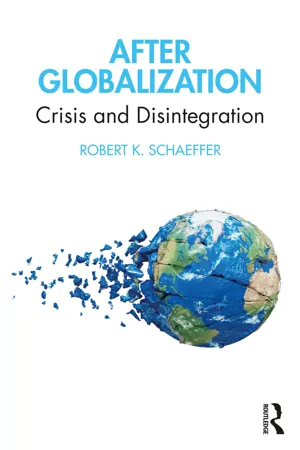
- 328 pages
- English
- ePUB (mobile friendly)
- Available on iOS & Android
About this book
In the 1980s, U.S. officials adopted tax and monetary policies that channeled huge new resources into Wall Street, which fueled a stock market boom. To increase profits and payouts to investors as stock prices soared, corporate managers consolidated businesses, outsourced manufacturing to low-wage countries, and adopted new technologies to increase productivity. Government officials then facilitated mergers and negotiated free trade agreements to speed the process of globalization. Wall Street became an engine of capital accumulation and a force for global change.
These developments resulted in massive job losses and stagnant wages for most Americans. Meanwhile, tax cuts and the stock market boom created vast new wealth for the rich, and the top 10 percent seized 50 percent of all income in the United States. The result was growing economic inequality.
During the decades that followed, globalization triggered regional economic crises, toppled governments, transformed societies, galvanized economic development in China, and created new forms of wealth and inequality around the world. Then in 2008, a financial crisis rooted in Wall Street triggered the Great Recession, wrecked the legitimacy of globalization as a development strategy, and unleashed populist or "restrictionist" social movements and political parties that challenged globalization and attacked its economic and political foundations.
This book examines the origins of globalization in the 1980s, the developments that triggered the Great Recession, and the political and economic forces that contributed to the disintegration of globalization as a force for change in the modern world. After Globalization explains what happened—and what comes next.
Frequently asked questions
- Essential is ideal for learners and professionals who enjoy exploring a wide range of subjects. Access the Essential Library with 800,000+ trusted titles and best-sellers across business, personal growth, and the humanities. Includes unlimited reading time and Standard Read Aloud voice.
- Complete: Perfect for advanced learners and researchers needing full, unrestricted access. Unlock 1.4M+ books across hundreds of subjects, including academic and specialized titles. The Complete Plan also includes advanced features like Premium Read Aloud and Research Assistant.
Please note we cannot support devices running on iOS 13 and Android 7 or earlier. Learn more about using the app.
Information
Chapter 1Declining U.S. Hegemony and the Battle Against Inflation
The Erosion of U.S. Hegemony
Table of contents
- Cover
- Half Title
- Title Page
- Copyright Page
- Table of Contents
- Acknowledgements
- Preface
- 1 Declining U.S. Hegemony and the Battle Against Inflation
- 2 Jumpstarting Wall Street
- 3 Wall Street and Stock-Price Inflation
- 4 Mergers and Downsizing
- 5 De-Unionizing, Outsourcing, and Deindustrialization
- 6 Technology and Job Loss
- 7 Economic Inequalities
- 8 Globalization and Crises
- 9 Globalization and China
- 10 Housing and the Great Recession
- 11 The Economic Costs of the Great Recession
- 12 The Political Consequences of the Crisis
- 13 Uncoupling and De-Globalization
- 14 Marginalization and Disintegration
- 15 COVID-19 and the Greater Recession
- Index